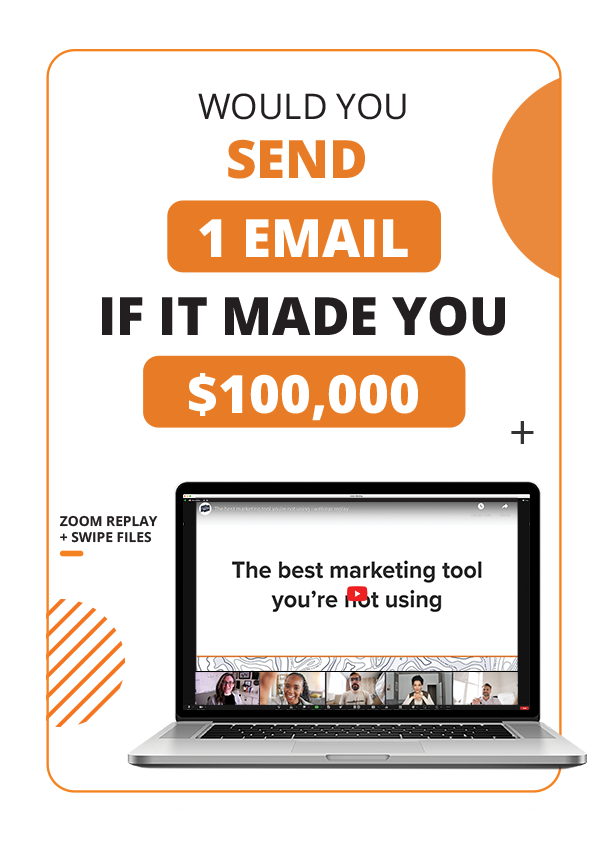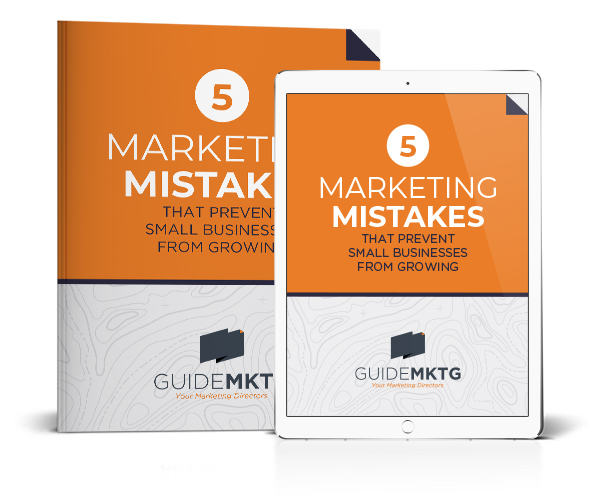Crafting emails that get opened and compel your target audience to take action requires skill, strategy, and a touch of creativity. For marketers, knowing how to write email marketing campaigns that get results is not an asset—it’s a necessity. These nine effective email copywriting tips will take your email marketing from just another thing on your to-do list to the most effective element of your digital marketing plan.
9 Email Copywriting Best Practices
When you know how to leverage email marketing well, it will become the most cost effective sales strategy you’ve got. These 9 email copywriting best practices are designed to help you level up your email marketing strategy and get better results.
1. Keep Readers Engaged
Each piece of your email, from the subject line to the email body, is meant to hook people and encourage them to keep reading your email campaign.
Your engaging subject line gets your reader’s attention so they actually open the email. The first sentence compels them to read the second sentence. The second sentence of your email campaign gets them to read the third (and so on).
Your call to action at the end encourages your target audience to take the next step and continue interacting with your business in some way.
Studies show you’ve only got about 9 seconds to grab your reader’s attention so each sentence of your email copywriting needs to be clear, and compelling. The more you can express in the least amount of words, the better.
The best way to make sure your email copy is irresistibly engaging is to have someone outside of your department read it. Preferably, you want to use someone who shares the same amount of knowledge about your company as your potential customers. Ask them to point out any pieces of your email that seem confusing or boring. Incorporate their feedback into the final draft and then click send.
The Importance of Email Subject Lines
Although both the subject line and the email body are important, compelling subject lines are the key to getting your emails opened. You want to use both an impressive subject line and preview text to make your email message impossible to pass by.
To Create an Eye-Catching Subject Line:
- Use short subject lines
- Add numbers
- Include power words (like these 14 magical words)
- Avoid spam words
- Don’t rely on click bait
Although click bait style subject lines may work from time to time, in general your email subject line should preview what’s inside by hinting at the insight the reader will gain from the email.
For more email subject line copy tips, read “How to Write a Catchy Email Subject Line“.
2. Stick to the Point
A common mistake marketers make in their email copywriting is bombarding potential clients with too many ideas or offers at once. Your email marketing campaign should have one clear, overarching idea. A singular, targeted message is always more effective than a monsoon of unfocused points.
The CEO of StoryBrand and Business Made Simple, Donald Miller, compares it to handing the person reading your email a bowling ball with each new idea you present. If you give them one bowling ball, they will be able to hold onto it. If you hand them more than one, your email gets a little harder to hang on to (i.e. digest). If you hand them more than two bowling balls, they are going to drop them all. Stick with just one main idea so that they can hang onto it.
If you need to explain a complex product or service, divide up your points into an email series, instead of trying to put it all into the same email.
The most effective sales emails are only about 200 words long. The goal of marketing emails isn’t to tell your potential client everything at once. Instead, strive to effectively pique their interest so they will open your next email campaign to learn more.
3. Use Short Sentences
We already know that effective sales emails are short and to the point. However, so are the sentences in the email. Commas, conjunctions (words like but, if, and), complex vocabulary, and industry jargon are not your friends. Complex sentences actually dilute the power of your message.
Instead, use clear, short sentences that keep your target audience engaged. Write the email in a conversational tone using the same vocabulary you use in a casual conversation with a friend. HubSpot recommends keeping your sales emails on a third-grade reading level. (You can check the reading level of your email using tools like the free Hemingway Editor.)
This is not because your ideal customers are unintelligent but because our brains are wired to conserve energy. When we have a problem to solve, we want the simplest, easiest to understand solution there is. A concise, easy-to-follow explanation of your service proves it fits the bill.
A good email copywriter should be able to explain even the most complex offerings simply.
4. Write to One Person
While writing your email body, imagine you’re having a direct conversation with a real person. Direct your message to an individual, not a group.
If you are able, include the reader’s name in the greeting. Then, use the word “you” throughout the message to make it feel even more personal. Address your audience’s pain points, desires, and challenges, to make them feel like you are writing emails just for them.
This simple tip can profoundly impact how your words resonate with potential clients. Instead of feeling like they are reading a mass email, they will feel seen and understood. That emotional response not only holds the reader’s attention but it also makes them more likely to use the product or service you are offering.
Connection builds trust and trust helps potential clients feel more confident in giving you their money in exchange for a solution to their pain points.
5. Paint a Picture of Success
As odd as this sounds, your ideal client doesn’t really care how your offering works. They just want to be certain that it will work for them.
Remember, your email body should only have about 200 words. You don’t want to waste them describing your service.
Instead, paint a picture of success. Show your target audience what life could look like after they work with you. Outline specific examples they can easily imagine.
You can achieve this by sharing customer testimonials or case studies. Then, invite your potential clients into a similar story with phrases like, “Imagine never having to worry about [your ideal client’s problem] again.”
You could also describe success, showing the tangible benefits of your offering. No matter how you go about it, you want to make your product irresistible by showing your target audience who you can help them become.
6. Tell Them Why Your Company Is Different
Especially if you provide a very common product or service, you want to use your email marketing campaigns to show potential clients what makes you different. Why should they choose your business over your competition?
There are two ways you can do this. The first is to think about your unique selling proposition and weave it into your email copywriting. How do you solve their problem in a unique way? What do you offer that no one else on the market does?
If you feel like there isn’t really anything that sets you apart, what can you highlight that no one else has bothered to point out? Even if it is something everyone else does, if you are the first to say it, people will remember you for that trait.
The second way is to reframe a common mindset around their pain point or your solution. We call this a paradigm shift. This new perspective provides value and helps potential clients see your brand as a thought leader and innovator.
7. Agitate The Pain
We only look for solutions to problems we actively feel. If we don’t feel enough pain, we won’t be willing to pay someone to fix it for us.
As crazy as it sounds, good email copywriting has to remind your potential clients that they have a problem. You want to point out how badly their pain point hurts and then illustrate how your product or service can solve their problem for good.
The tricky part is that you don’t want to overdo it. Think of agitating the pain as adding salt to a recipe. You want just enough to bring out the other flavors but not so much that it overtakes the dish.
8. Leave a Cliffhanger
If you are using an email series to outline the benefits of a product or service, cliffhangers are a great tool to encourage people to read your next email. Sometimes, the promise of more is all it takes to keep people engaged.
A few examples of cliffhangers at the end of email marketing campaigns are:
- “Stay tuned for our next message where we reveal _______.”
- “Curious about how _________? I’ll unpack that in the next email.”
- “Would you like to know ______? Stay tuned for my next message!”
9. End with a Clear Call to Action

At the end of your email, tell your readers exactly what you want them to do next. Although your entire sales email body has hinted at what you want them to do, you still have to spell it out.
Hinting implies that you lack confidence in what you have to offer. Use a bold, crystal clear call to action (CTA) that leaves no room for doubt. A clear CTA sounds like:
- Sign up today
- Buy now
- Schedule your call
- Reserve your spot
Swipe our free “73 Call-to-Action Phrases” document and update your CTAs today.
Make sure your CTA stands out from the rest of your email body. Use a bold font or color so that it is easy to see and act upon.
Boost Your Email Marketing Conversions
Successful businesses don’t persuade customers by chance. It’s by design, through purposeful and impactful copy. Effective email copywriting strikes the delicate balance between creative storytelling and strategic marketing. These nine email copywriting tips will help you crank up your email game and boost your email marketing conversions.
However, if you are a marketer who would rather set up 76 ad campaigns than do email copywriting, you need to partner with an email copywriter. If you don’t enjoy the email copywriting process, you won’t be willing to put the time and effort it takes to master the art of marketing copy.
Here’s an easy solution: schedule a call with Guide MKTG. We will equip you with a marketing plan proven to get results. Then, our team of skilled marketers will make it happen. We can help you build brand awareness, write your email content, or even create a landing page to bring in new email subscribers. You’ll have a clear strategy, on-going thinking partners, and an expert team to execute all your marketing needs.
Want your existing customers to buy again?
Email Marketing Webinar
A behind-the-scenes look at a $100,000 email
How to use email without annoying your customers
A Google file with email templates you can use
Replay | $50 for unlimited access






